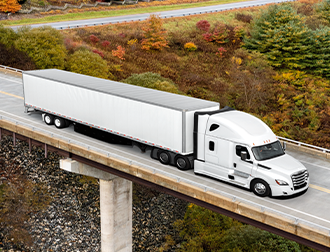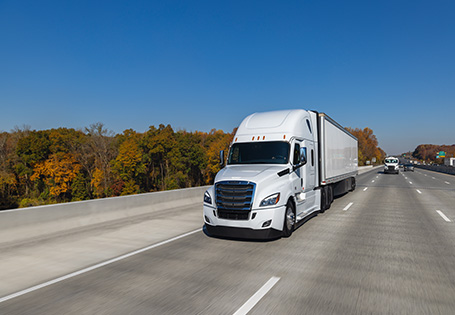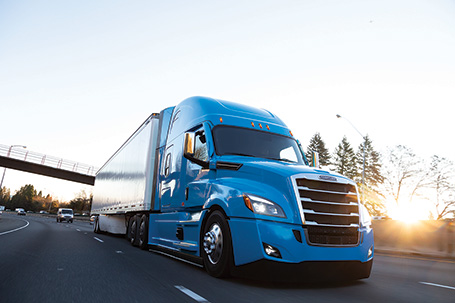Aftertreatment Systems 101: What Truck Drivers Needs to Know
Published on
26 September 2017
Your Center for 37663
Searching for centers...
No centers found in this area. Please try a different location.

26 September 2017
Today’s diesel trucks are engineered for performance, emissions compliance, and efficiency. A key part of this is the aftertreatment system (ATS)—a complex emissions control system designed to reduce harmful pollutants and keep trucks EPA-compliant.
A diesel aftertreatment system treats engine exhaust before it exits the tailpipe. It uses technologies like Selective Catalytic Reduction (SCR), Diesel Oxidation Catalyst (DOC), and Diesel Particulate Filter (DPF) to remove harmful nitrogen oxides (NOx), soot, and other emissions.
Most late-model trucks also use Diesel Exhaust Fluid (DEF). DEF is injected into the exhaust stream where it reacts inside the SCR catalyst, converting pollutants into harmless nitrogen and water vapor.
One of the most advanced configurations is Detroit’s 1-Box™ system, found on many Freightliner trucks. It integrates SCR, DOC, DPF, and DEF dosing into one compact module—lowering back pressure, reducing weight, and improving fuel economy.
Buying a used truck with a properly functioning aftertreatment system is essential. These systems are required by law and expensive to repair or replace if neglected. But they’re not a red flag – they’re a sign of modern efficiency when maintained correctly.
SelecTrucks inspects every truck’s emissions system and offers options like Detroit-certified Reman DPFs, which are cleaned and restored using proprietary processes to help ensure longevity and performance.
An aftertreatment system is responsible for reducing the harmful emissions produced by a diesel engine. It does this by treating the engine’s exhaust gases after they leave the combustion chamber – hence the name. In modern commercial trucks, the system works as part of a broader emissions control strategy designed to meet stringent EPA standards.
The process begins with exhaust leaving the engine and entering the Diesel Oxidation Catalyst (DOC), which converts harmful carbon monoxide and hydrocarbons into carbon dioxide and water. From there, the gases flow into the Diesel Particulate Filter (DPF), which traps and stores soot (particulate matter). Over time, the DPF performs a “regeneration” process – either actively or passively—to burn off the collected soot and keep the system clear.
Next, the exhaust moves into the Selective Catalytic Reduction (SCR) system. This is where Diesel Exhaust Fluid (DEF) is injected into the exhaust stream. DEF reacts with nitrogen oxides (NOx) in the presence of the SCR catalyst, converting them into harmless nitrogen and water vapor. Finally, the treated exhaust exits the tailpipe as significantly cleaner emissions. Together, these components form a complex but essential system that ensures trucks meet emissions regulations while maintaining fuel efficiency and engine performance.
Maintenance is straightforward when you follow recommended service intervals:
Replace DPFs as needed (truck systems will alert you)
Use high-quality diesel fuel
Maintain proper DEF levels
Replace air and oil filters regularly
Avoid extended idling and perform passive regenerations on the road
If the truck operates in short-haul or low-speed environments, it may require manual (stationary) regenerations more often than highway trucks. The onboard system will notify you when this is required – no guesswork involved.
Modern aftertreatment systems aren’t just for EPA compliance – they contribute to better fuel efficiency, increased torque and horsepower, and reduced long-term ownership costs. They make commercial trucks cleaner, more powerful, and more economical than ever.
SelecTrucks offers comprehensive coverage through its Aftertreatment System Warranty—available for 12 months or 100,000 miles when combined with a Select Limited Warranty. Coverage includes:
DOC & DPF (as progressive damage)
DEF tank & injector
SCR catalyst & doser
NOx sensors, ATS injectors, and pressure sensors
Also included is a 90-Day Buyer’s Assurance at no additional cost, giving you confidence that your emissions systems are covered.
Ready to protect your next truck investment? Visit our website or contact us today to learn more about how SelecTrucks can help keep you moving forward.
Our trusted team of truck advisors are here to help you reach your goals by providing exceptional used truck solutions with unwavering support. That means knowledge of your truck as well as business tips, financing and more.







